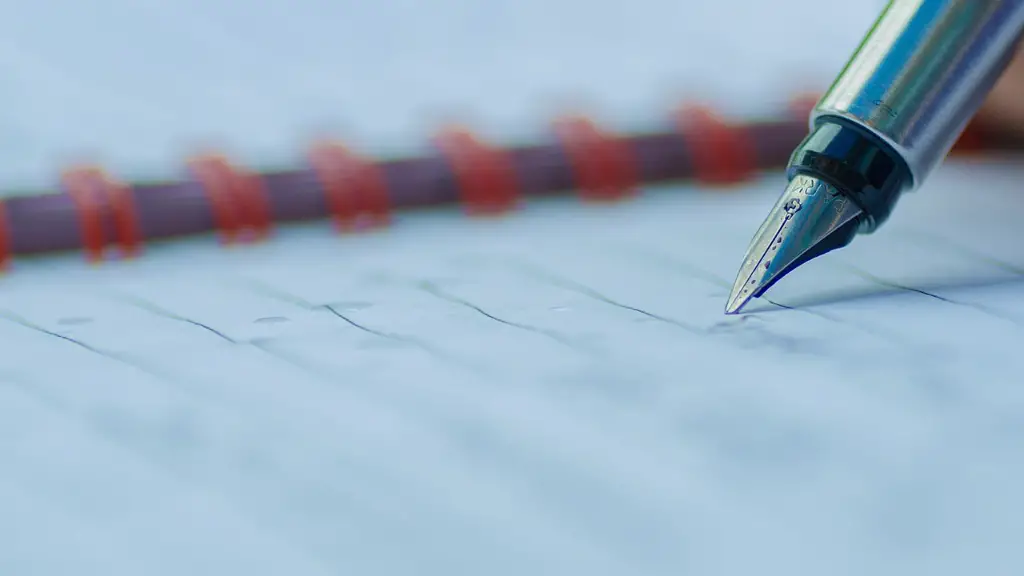How To Describe Poetry In Your Own Words
Poetry has been characterized as a complex form of writing that is written to invoke feelings and provoke thought. It is not simply the words on the page, but the combination of words, tone, the emotions that come from the words, and the interpretation of the words by the reader. But how do we describe poetry in our own words? How do we narrow down poetry to its most basic meanings and describe it in a unique way that speaks to our own unique understanding and interpretation of the poem?
The best way to describe poetry in your own words is to first take the time to study and contemplate it. Take the time to read and re-read it. Write down your thoughts about how you interpret the words, how the words make you feel, and how you can pair them with certain scenes or stories from your own life.
The next step is to be creative and descriptive with your writing. Use vivid words, figures of speech, and comparisons to create a powerful and unique way of interpreting the poem. Instead of just summarizing the poem, choose elements from the poem that you can use to create a deeper, more meaningful analysis. Look for elements that move you or that evoke feelings or memories and connect them to the poem.
Don’t forget to include your own perspective when writing a poetic analysis. Share your thoughts and feelings on the poem, as well as your own interpretations, and be sure to provide evidence and support as to why you think a certain word, phrase, or image evokes a certain feeling in you. Finally, be sure to discuss why a certain aspect of the poem is meaningful to you, and why you have chosen the words you have chosen to describe it.
Analyzing the Poem’s Form and Structure
Another way to describe poetry in your own words is to focus on the poem’s form and structure. Analyze the way it is written, from the meter and rhyme scheme to the line and stanza organization. Use technical words to explain the components of the poem such as iambic pentameter or alliteration. Talk about the way in which the poem moves from one idea to the next, such as repetition or even the use of anaphora.
Analyzing the form and structure of a poem can provide readers with a greater understanding of the poem and its meaning. Describe how the structure of the poem contributes to its overall meaning, and point out any discrepancies between the form and the content. This type of analysis provides a unique way of looking at the poem, and it also allows the reader to engage with the poem in a different way.
Exploring Sensory Language
Another way to explore and describe poetry in your own words is to focus on the use of sensory language. Sensory language is language that appeals to the senses, such as sight, sound, smell, taste, and touch. Pay attention to the words the poet uses to evoke certain sensations, and use your own words to describe these senses. For example, did the poet use words that evoke the smell of roses or the sound of a gentle breeze? Pay attention to these words and use your own words to describe how the poem made you feel.
Exploring the use of sensory language can help readers understand how the poet is attempting to invoke feelings and evoke emotion. It can also help readers to connect to the poem on a deeper level and gain a better understanding of the poet’s intentions.
Focusing on Word Choice
The use of words can also be a great way to describe poetry in your own words. Pay attention to the words the poet chooses, and consider why they may have been chosen. Are they simple, common words or are they more intricate and unique? Are the words being used to evoke a certain emotion or to invoke a certain idea? Taken together, the words in a poem can create a powerful effect, and understanding the word choices made by the poet can help readers to more fully engage with the poem and its underlying message.
When analyzing the word choices, keep in mind the connotations the words have. Consider the connotations of the words the poet has chosen and how those words contribute to the poem’s overall meaning. Doing so can help to uncover hidden meanings behind the words and help readers understand the poem on a deeper level.
Exploring Metaphorical Language
Finally, don’t forget to explore the use of metaphors and similes in the poem. Metaphors and Similes are powerful tools that poets use to convey emotion and meaning. By looking at the metaphors and similes in the poem, readers can often uncover hidden meaning and uncover the poem’s underlying message. Also take note of any other figurative language, such as personification and hyperbole, that the poet may have used.
Exploring the metaphors and similes in the poem can help readers to understand the poem on a deeper, more meaningful level. In your own words, explain what the metaphors and similes mean, and discuss how they contribute to the poem’s underlying themes.
Analyzing Literary Devices
Don’t forget to analyze the use of literary devices in the poem. Literary devices are techniques that the poet uses to create meaning and evoke emotion. Common literary devices used in poetry include repetition, alliteration, personification, and irony. Pay attention to the way the poet uses these devices, and use your own words to describe their effects and how they contribute to the poem’s overall meaning.
Exploring literary devices can help the reader to better understand the poet’s intentions, as well as the emotions and thoughts the poet was attempting to evoke. When analyzing literary devices, be sure to use your own words to describe the effects and why they may have been used.
Journaling Your Thoughts
Another great way to describe poetry in your own words is to write down your thoughts, feelings, and impressions about the poem. When writing about the poem, take the time to explore your own feelings and thoughts. Reflect on why certain aspects of the poem may have struck you in certain ways, and why certain images may have seemed more meaningful than others.
Creating a journal entry about the poem allows you to explore the poem on a deeper level and see it from a new perspective. It also allows you to capture your own feelings and interpretations in a creative and meaningful way.
Analyzing the Poet and Their Work
In addition to analyzing and describing the poem itself, don’t forget to analyze the poet and their work. Find out more information on the poet and their writing style, analyze the themes they often explore, and look for any patterns or motifs in their work. Research can be an important tool when it comes to understanding a poet’s motivations and intent.
When analyzing the poet, be sure to draw connections between the poet’s life and the themes explored in the poem. Discuss why the poet may have chosen certain words, why they may have used certain images, and why particular events may have been more significant to the poet. Doing so can help readers gain a deeper understanding of the poem and its underlying message.
Using Analogy to Describe Poetry
Finally, don’t forget to use analogy to describe poetry in your own words. Analogy is a way of comparing two different things in order to explain something. Think of the poem in terms of something familiar that you can relate to. For example, if the poem is about love, think of something in your own life that you have experienced love in. Perhaps you can compare it to the feeling of a warm hug or the smell of fresh-baked cookies.
Using analogy allows readers to relate to the poem on a personal level and gain a better understanding of its underlying message. It also provides an interesting way of describing the poem and helps to make the poem more meaningful to the reader.
Exploring Literary Movements and Genres
In addition to analyzing the poem itself, it can be helpful to consider the poem within the context of literary movements and genres. Consider which genre or style the poem falls into and find out more about the movement it is associated with. Research the characteristics of the movement and discuss why the poem may have been classified as such.
Exploring literary movements and genres can help readers to gain a better understanding of why the poem may have been written in a particular way, as well as the underlying message the poet was trying to convey. It can also help to explain why certain images and symbols may have been used and why certain elements of the poem may have been meaningful to the poet.
Deconstructing the Title
Another way to describe poetry in your own words is to deconstruct the title. Oftentimes the title of a poem can be just as meaningful as the poem itself. Look for subtle messages within the title and explore why the poet may have chosen certain words. For example, consider why certain words may be capitalized, why specific adjectives and nouns may have been chosen, and how the title may relate to the themes and images explored in the poem.
Exploring the title of the poem can help readers to gain a better understanding of why certain themes or images may have been chosen and why certain words were used. It can also provide readers with insight into the overall meaning and the poet’s intentions.
Exploring Figurative Language: Personification, Alliteration, and Hyperbole
Figurative language, such as personification, alliteration, and hyperbole, can be another great tool for describing poetry in your own words. Pay attention to the way the poet uses these devices to create imagery, evoke emotion, or convey a certain point. When describing the poem, use your own words to explain the effects of the figurative language and how it contributes to the poem’s overall meaning.
Exploring figurative language can help readers to gain a better understanding of the emotions, ideas, and thoughts the poet is attempting to evoke. It can also provide an interesting and unique way of looking at the poem and uncovering the underlying message.
Conclusion
Describing poetry in your own words can be a great way to gain a better understanding of the poem and its underlying message. Take the time to study and contemplate the poem, pay attention to the words the poet uses, explore literary movements and genres, and be sure to include your own unique insights and interpretations. Finally, don’t forget to use your own words and be creative with your descriptions. Through careful analysis and creative writing, you can gain a deeper, more meaningful understanding of the poem and its meaning.



